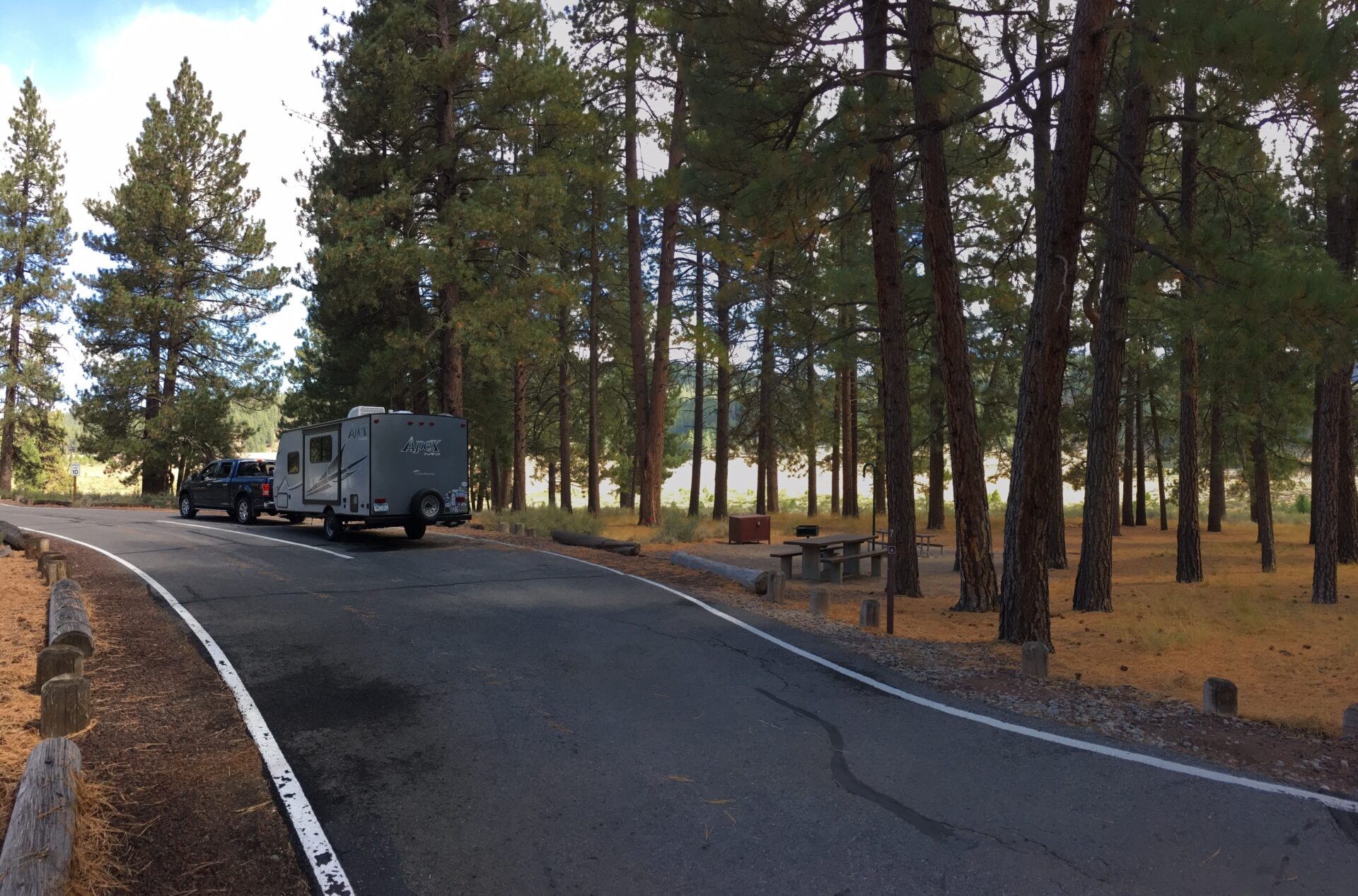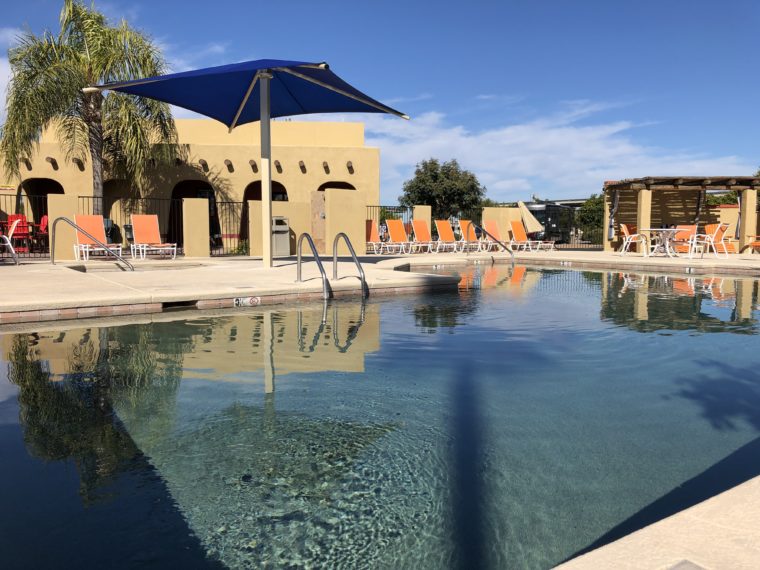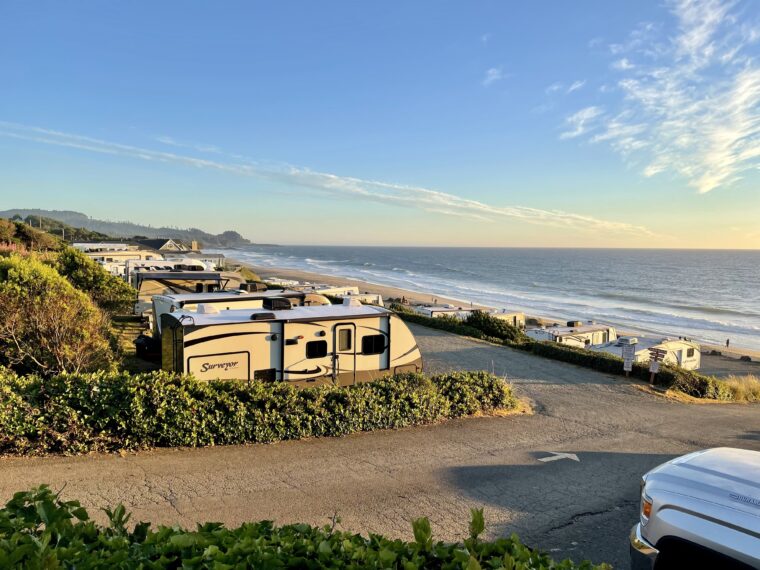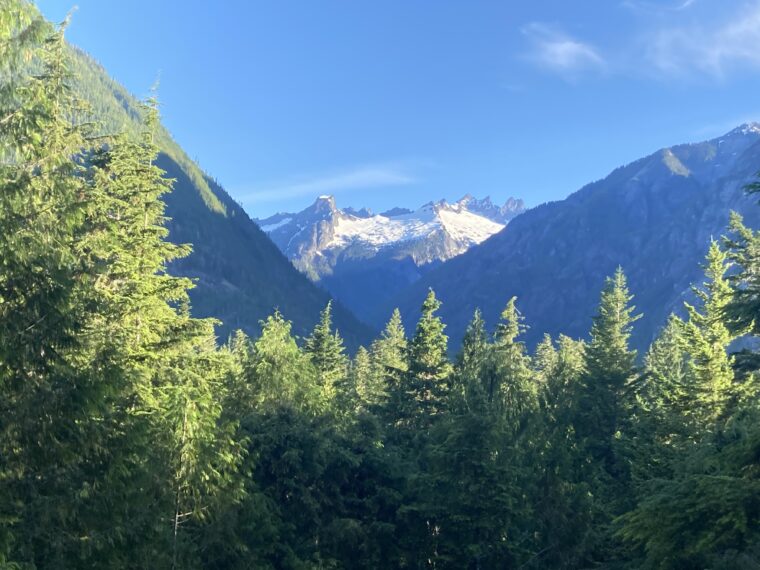The California Crest Trail spans 2,150 miles through unique landscapes in the Golden State. From scorching deserts to towering sequoia forests and foggy oceanside villages, the trail connects the Basin Ranges, Sierra Nevada, Cascades, Klamath Mountains, and the Coast Ranges. It’s also one of the best overlanding routes in the U.S.
The route is manageable for most vehicles, although all-terrain tires are ideal. Are you looking to put your overlanding vehicle to the test? There are alternative routes along the way with technical terrain for high clearance, four-wheel drive rigs.
Other considerations when planning your trip are to figure out the best time to overland the California Crest Trail and how long you have to do it. The route is extensive, and the state has varying climates. For instance, Death Valley is excruciatingly hot during the summer, while the Sierras’ high mountain passes don’t lose snow until mid-summer.
7 Overlanding Routes With Campgrounds Nearby
If you’re planning to take on the entire route, the best time to overland the California Crest Trail is mid-summer from the north. Then, finish in Death Valley during the cooler months. You can also do the route in segments when it best suits the weather and you.
Here’s your overlanding guide to the California Crest Trail, including where to camp in each region.
Basin and Range
This section of the California Crest Trail is a part of the Basin and Range region, which comprises southeastern California and areas of Utah and Nevada. It’s defined by alternating valleys and mountains. The best time to visit the Basin Ranges is from mid-fall through mid-spring.

Trona Pinnacles, Trona, California
- Number of Sites: Unknown
- Pad Type: Dirt
- Reservations: First come, first served
- Tent Camping: Yes
Trona Pinnacles offers one of the best camping experiences in California, and it’s free.
This Bureau of Land Management (BLM) campground is bare bones with no hookups and vault toilets. The draw of the campground is sleeping among some of the country’s most unique geological features: tufa spires. Born from the Searles Dry Lake basin, tufa spires are pinnacles that reach as high as 140 feet. Five hundred of these pinnacles decorate the desert and Trona Pinnacles.
Plus, an overlanding trip isn’t complete without some boondocking.
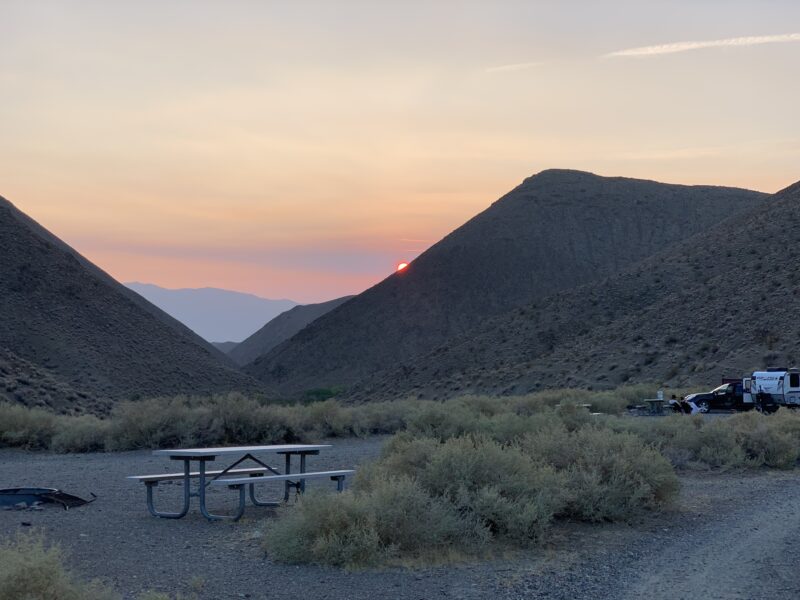
Wildrose Campground, Death Valley National Park, California
- Number of Sites: 23
- Pad Type: Gravel
- Reservations: First come, first served
- Tent Camping: Yes
Wildrose Campground is home in Death Valley National Park. It’s known for sunrises, sunsets, dark skies, and recreational trails.
“A perfect place to camp in Death Valley,” according to a Campendium review. “High enough for not being too warm. Gorgeous night sky and lots of space.”
The campground offers free dry camping, a fire ring, a picnic table, vault toilets, and water.
Sierra Nevada
The Sierras run along the eastern edge of California between Fredonyer Pass and Tehachapi Pass. It runs 400 miles and includes three national parks, in addition to Lake Tahoe and Mount Whitney. The best time to visit the Sierra Nevada is from late June to mid-fall. Be sure to monitor that winter’s snowfall before traveling.
Alpine Meadow Campground, Truckee, California
- Number of Sites: 25
- Pad Type: Cement
- Reservations: Yes
- Tent Camping: Yes
Alpine Meadow Campground is a beautifully maintained Army Corps of Engineers campground in the Martis Creek area. It’s an ideal spot for biking, hiking, kayaking, and catch-and-release trout fishing. Nearby you’ll find the town of Truckee and Lake Tahoe.
11 Army Corps of Engineers Campgrounds to Add to Your Bucket List
The campground costs $20 per night with provided fire rings, picnic tables, vault toilets, water, and pull-through sites. Pets are also welcome.

Wild Plum Campground, Tahoe National Forest, California
- Number of Sites: 49
- Pad Type: Dirt
- Reservations: Yes
- Tent Camping: Yes
Another option in the Sierras is Wild Plum Campground. Wild Plum Campground is a U.S. Forest Service campground along a river bank with views of the Sierra Buttes. Nearby are hiking trails and the Kentucky Mine Historic Park and Museum.
The Most Popular National Forests in the US to Camp
This is a dry camping location with fire rings, picnic tables, pull-through sites, vault toilets, water, and firewood. Reservations are required for $35 per night.
Southern Cascades and Klamath Mountains
The Southern Cascades and Klamath Mountains create a unique natural environment. The Sierra Nevada give way to the volcanoes of Lassen Volcanic National Park and Mount Shasta. The region has dense forests of juniper, sage, and diverse conifers. The best time to visit the Southern Cascades and Klamath Mountains is late June to mid-fall. This is the northernmost point of the California Crest Trail.
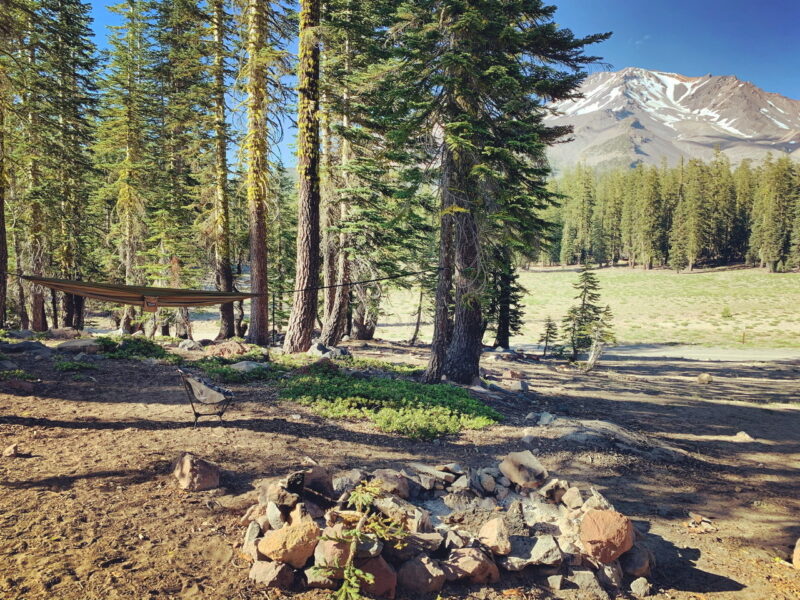
Sand Flat Dispersed Camping, Shasta National Forest, California
- Number of Sites: 10
- Pad Type: Dirt
- Reservations: No
- Tent Camping: Yes
Dispersed camping on Sand Flat Road is a must. It’s a high-clearance road with boondocking options and a picturesque view of Mount Shasta. When planning your trip, prepare for no amenities. There are recreational trails nearby.
8 RV Campgrounds Near the Volcanic Legacy Scenic Byway
“The road to get in is a bit rough so you’ll need high clearance,” according to a Campendium reviewer. “My Tacoma had no problem, but I’d be afraid to take a sedan back there. When you reach the area, there are lots of little spots to choose from. You can either camp along the dirt road north of the loop in an open area or, I would suggest, take one of the side dirt roads to the west into the woods for a few thousand feet.”
Coast Ranges
The Coast Ranges round out the California Crest Trail. This segment dips southwest toward the coast. You will journey through the towns of Humboldt and Mendocino until you arrive at the inspiring Pacific coastline. The best time to visit the Coast Ranges is from May to mid-fall. Be wary of snow accumulation from the previous winter.
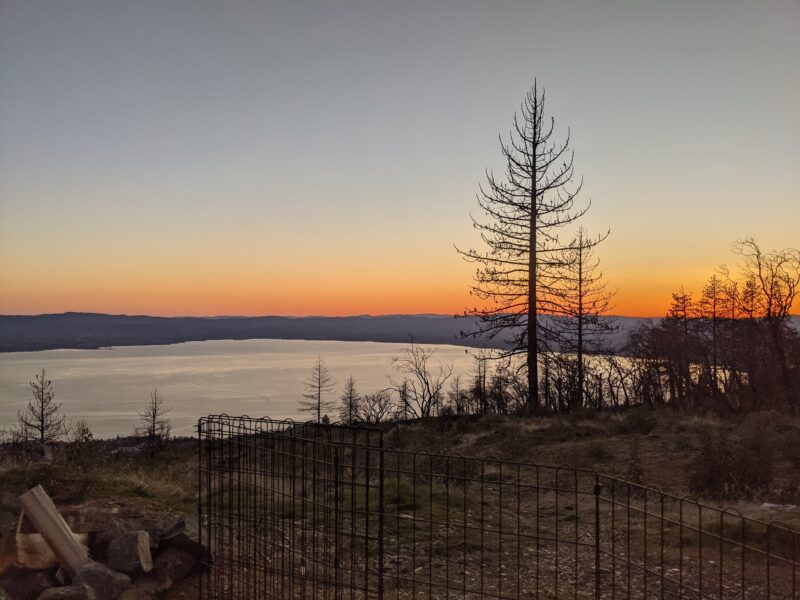
Clear Lake View, Mendocino National Forest, California
- Number of Sites: Unknown
- Pad Type: Dirt
- Reservations: No
- Tent Camping: Yes
Are you looking for a hard-to-reach spot with privacy? Clear Lake View is your next campground.
This Clear Lake View dispersed camping site has no amenities, but the views are worth it. Prepare to have 360-degree views of Clear Lake all to yourself as you begin or finish your overlanding trek of the California Crest Trail.
California Crest Trail Travel Tips for Overlanders
Here are a few tips to consider if you’re planning to overland the California Crest Trail:
- Check your brakes before your trip.
- Download GasBuddy. Fuel is expensive in California.
- Drive carefully along the hairpin turns and watch out for wandering wildlife.
- Follow local fire bans and be responsible about campfires and wildfire safety.
- Prepare for long stretches of road without fuel.
